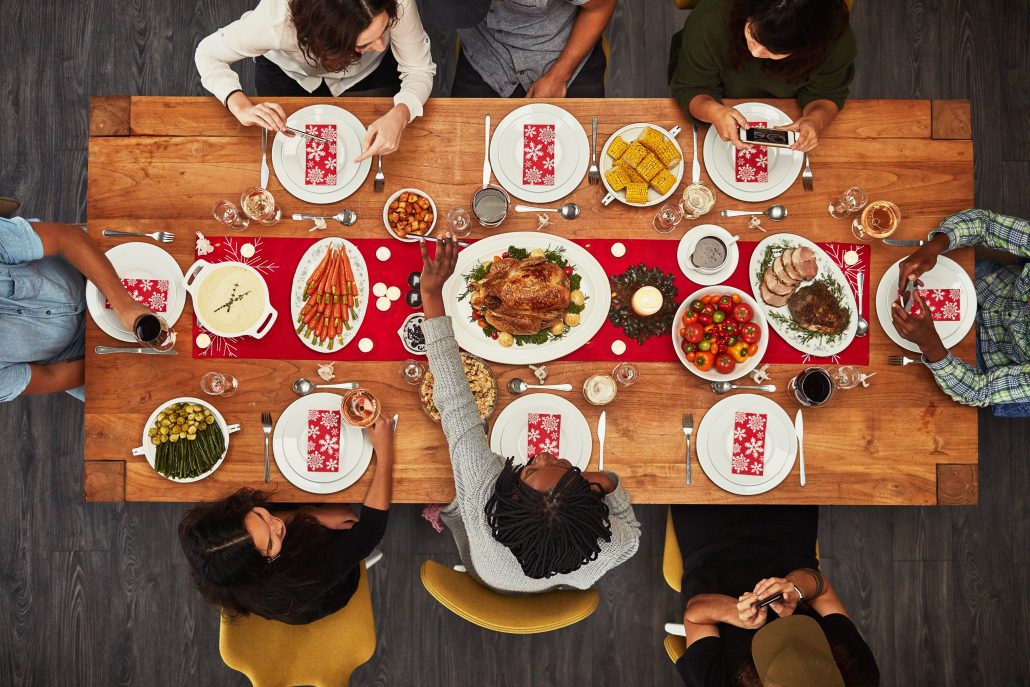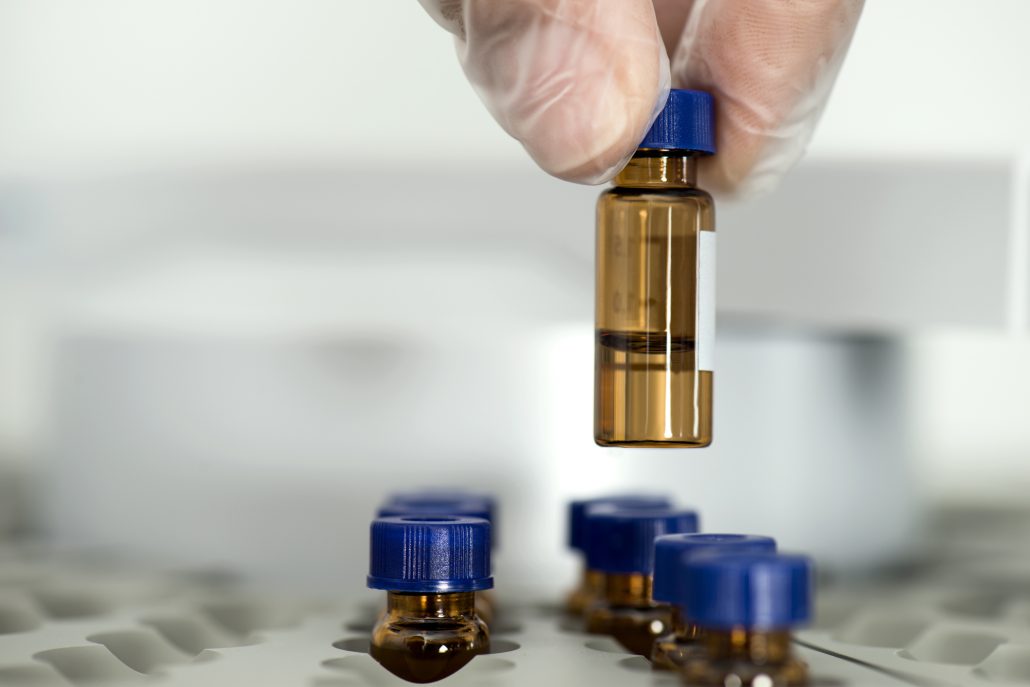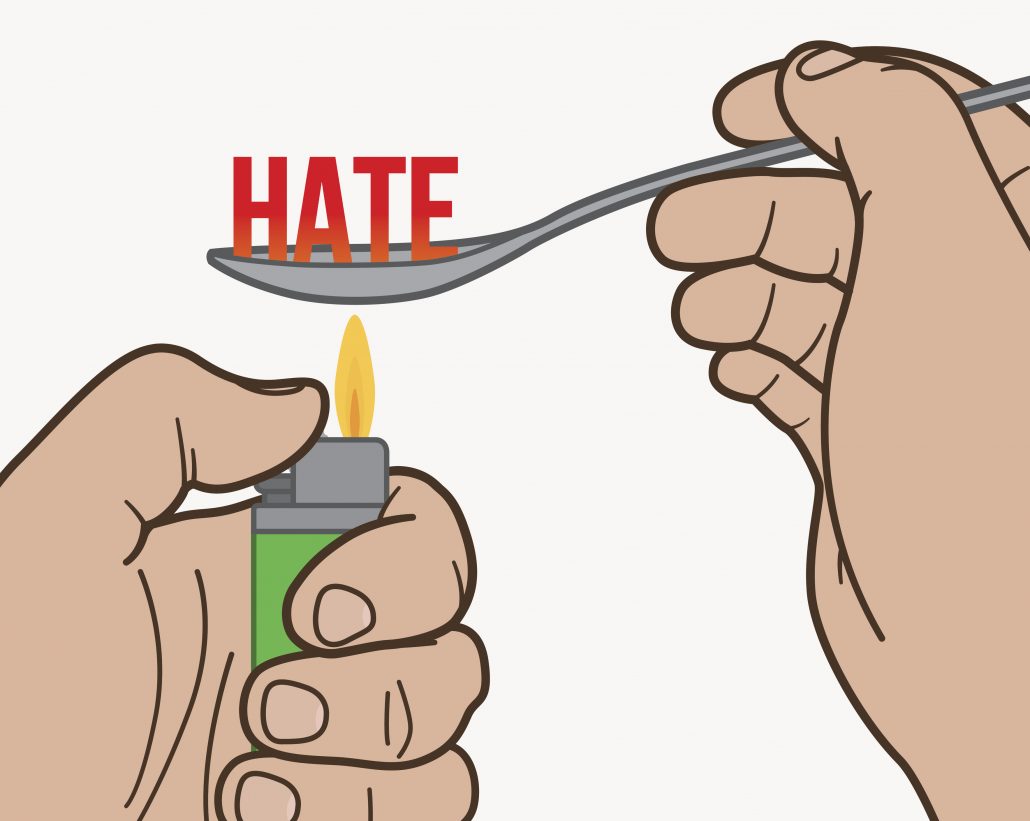by staff | Dec 18, 2017 | Alcoholics Anonymous, Christmas, Coping Skills, Family, Holiday, Recovery, Sober Fun, Sobriety

(This content is being used for illustrative purposes only; any person depicted in the content is a model)
Welcome to another exciting edition of the 12 Steps of Christmas; our own take on the classic Christmas carol, with a sobriety-themed twist to try and bring some more compassion and insight to a cheerful time of year for those of us in recovery from drugs or alcohol. Substance use and addiction can make the season a tough time, but we want to help anyone who may be struggling or just people in recovery who need a little inspiration, to get in the right state of mind for the holiday.
Of course, we want to hear your feedback, and we are happy to share with our followers and friends more of the 12 Steps of Christmas.
 Step 2: Came to believe a Power Greater than myself could restore my holiday cheer
Step 2: Came to believe a Power Greater than myself could restore my holiday cheer
You may remember that in Step 1 of Christmas we talked about unmanageability and about how the holidays and our loved ones are pretty much out of our control. So then what do we do?
Well, for this one the 2 turtle doves probably aren’t going to cut it. For those familiar with the 12 Steps used in many recovery fellowships, there comes the concept of believing a Power Greater than yourself can help you out. Now for some, this can be the most difficult aspect of 12 Step programs because any implication of concepts like faith or spirituality can create contempt or frustration. People may resist this idea, thinking it is pushing a certain god or religion onto them.
Some people think Santa is more realistic than a god. Well, fine… try delivering presents to all the nice kids in the world in one night with only a few reindeer and a belly full of Oreo cookies! Now THAT is a power greater than you, for sure!
St. Nicholas with the mic drop!
We are not here to argue the idea of any god. We aren’t trying to force anyone into some kind of religious epiphany or preach any gospels. But, for those who are open to exploring the idea of a Higher Power; it can be extremely helpful when we talk about the struggles we face during stressful holidays.
Step 2 is all about finding the willingness to believe something outside of yourself can help you through this holiday. Sure, you should also be aware of yourself and your actions. But be open to the idea that you don’t have to force the holiday to be special, it just is.
Tis the season for believin’ dude!
Rejoicing without religion…
Now, of course, one thing is that not everyone celebrates Christmas in the first place. Different religions and cultures celebrate in various ways during this time of year.
We are pleased to wish everyone a Happy Chanukah, a Joyous Kwanzaa, and everything in between. In no way are we saying sobriety depends on your commitment to a faith during any holiday. For those who find themselves celebrating Christmas, there can be a great deal of diversity in how you celebrate and why. Even though is it historically a Christian holiday, plenty of non-Christians, atheists, and agnostics still celebrate. According to the 2014 General Sociological Survey:
- 21% of the American population does not identify with a religion
Younger people tend to be the majority of these trends. Yet, according to a new Pew Research Center survey:
- 90% of Americans celebrate Christmas
- 95% of Christians say they celebrate Christmas
- Only 46% of Americans say they celebrate as primarily a religious (rather than cultural) holiday, down from 51% who said this in 2013
So, with so many people not subscribing to the traditional guidelines of the Christianity, there are plenty of ways to celebrate Christmas without needing to fall in line. In early recovery, a lot of people are still trying to find a foundation to build some kind of understanding of spiritual concepts. So now isn’t the time to push them too hard in one direction or another. Just use this time as a chance to be more open to the joy and cheer that come your way.
You don’t have to be “spiritual” to be in the Christmas spirit…
For those who consider themselves spiritual or faithful, connection with your Higher Power can be the key to getting through the holidays. Some may view this time of year as a specific celebration of their faith and therefore should take every opportunity to remind themselves through the difficulties they face in recovery to appreciate and honor that connection to family and friends.
For those who do not consider themselves spiritual or faithful, you might even consider the holiday itself to be a source of power. The energy and the atmosphere it creates between people might be just enough to help you feel even more compassion and connection to those you love. Even if people don’t want to spend their Christmas in church or in prayer, you can still take the time to connect with your family and friends. Maybe that is what will restore your holiday cheer; the love you have with those you are close to. It doesn’t have to be a god or a faith, just be grateful and present for these moments.
Recovery from substance use disorder gives us the opportunity to cherish things and celebrate life in a new way. Believing that something bigger than you, even if it just Santa Clause or the Christmas spirit, can help bring the joy back into experiencing the holidays with your family and friends. Try to appreciate the chance to be clean, sober and with the people who mean the most to you. If nothing else, that is powerful beyond measure.
And leave some cookies and milk out… just in case.
Take some time this year to be open to the joy of the holidays, even if you don’t know where that cheer comes from. If you are struggling this holiday season, ask for help; not just for your family but, for yourself. Give yourself and those who love you the most the best gift you can. If you or a loved one is struggling with substance abuse or addiction, please call toll-free now.
CALL NOW 1-888-922-5398
by staff | Nov 20, 2017 | Coping Skills, Family, Recovery, Self Improvement, Sober Fun, Sobriety

For some of us, the holidays can be hard. Whether you are new to sobriety, in long-term recovery, or just a human being who just happens to live in a world with holidays, certain times of year can bring on a lot more stress than you would prefer to deal with. Thanksgiving can be one of these difficult times of the year. Some of us find it overwhelming to be surrounded by so many relatives and close friends because it can lead to high-stress social situations. Like when that one uncle brings up politics or that one aunt talks about their much more successful child. Or like when the parents bring up that time you pawned all their jewelry and crashed their car running from the cops.
No? Okay so maybe that is a very specific example.
Either way, Thanksgiving can be tough. Some of us in recovery from drug or alcohol addiction might not be able to spend this holiday with our families. We might feel isolated or even left out if our addiction has placed us in a situation where we cannot be directly present with our loved ones. Or we may find it a challenging situation simply because it is usually a day we remember drinking.
But still, there is always a great deal to be thankful for.
This week, as the holiday season comes in full force, we wanted to share 4 ways to get through Thanksgiving in sobriety for those who might be having a little more trouble than others.
-
Be present
Too often people forget that holiday gatherings aren’t so much about the food or the partying. They are about the quality of time being spent together. Being present and in the moment will help you to actually enjoy the holiday instead of stressing over it. Even if you are not physically present with your family, being more available to those you are able to be with can make Thanksgiving in sobriety more enjoyable.
And you can still be available for your family and friends that aren’t around by reaching out over the phone and giving them some of your time as well.
If you go into the holiday with the head-space of being a drag, you will probably follow through with that. But if you chose to be actively engaged in you can easily give new meaning and feeling to the experience.
-
Decide how to talk about it
Sometimes the fact that you are in recovery will come up, so you should decide how you want to talk about it… if you want to talk about it. The great thing is you aren’t required to tell anyone who doesn’t know. You don’t have to explain yourself. Just let people know you don’t drink.
When it comes to family or friends who do know about you issues with substances, decide how comfortable you feel with this conversation. Be willing to address concerns, but also set boundaries. You still have to take care of yourself, especially in early recovery.
Try to focus the conversation on the good side, like the fact that you are enjoying a Thanksgiving in sobriety with them. Some people will want to focus on the bad, but you can still decide how you are going to talk about it. To stay in the spirit and be present, talk about the solution you have now, not the problem you were facing.
-
Include your support system
Having a strong support system is a vital part of long-term recovery. Whether it is relatives, close personal friends or people from the recovery community, having people to have your back definitely helps. Holidays are all about connection, so stay connected to those who share your experience. Let your family members know you’re going to be leaning on them for support if things get hectic.
Also, have people outside of the family to reach out to. If you are involved in a recovery fellowship or support group, connect with your peers to learn how they handle similar situations. Don’t be afraid to ask for help. Include people who know what you are going through and who can help keep you on track.
-
Get in the Thanksgiving Spirit
One way to enjoy Thanksgiving in sobriety is to actually commit to the idea of Thanksgiving. This is a holiday all about being grateful for what you have and giving thanks and love to those closest to you.
If you are grateful this Thanksgiving, be sure to give some of yourself. You can help the family with making food or setting up, or you can go beyond that and give in other ways. Sometimes people in recovery find ways to volunteer for the holidays. Participate in some form of community activity that gives back and helps those in need.
Being enthusiastic about the opportunity to share this time with your loved ones and give to others can help you overcome the hang-ups you might encounter. If you can try to get in the spirit of the holiday, it won’t be so much about drinking or stressing over everything and more about spending the time with the people you love.
The spirit of the holiday is to celebrate what you have. If you are sober you have something pretty significant to be celebrating, right? Thanksgiving in sobriety lets us reconnect with those we love and show gratitude for the second chance at life. It shouldn’t be all that hard to get into the spirit of being grateful. The real good feeling comes from loving and giving back.
We would like to offer you the FREE GIFT of a checklist to help decipher if you are helping or hurting a loved one who is struggling with addiction.
Click for FREE GIFT
Always remember during the holidays to take care of yourself. For Thanksgiving in sobriety be grateful for how far you have come. If you are still struggling with an addiction, now is the time to get help, so that you can give your loved ones the peace of mind they deserve so you can have even more to be thankful for. If you or someone you love is struggling with substance abuse or addiction, please call toll-free now.
CALL NOW 1-888-922-5398
by Justin Mckibben | Nov 2, 2017 | Maintenance Drugs, Methadone, Naloxone, News, Prescription Drugs, Suboxone, Vivitrol

While the nation is still struggling to find the right strategy to climb out of the opioid crisis in U.S. it seems many are holding onto the idea that Big Pharma is going to save us from the destruction they helped create. While we can agree that evidence-based medical assistance in recovery is a useful tool, some seem to think that the only fix for a pill problem is more pills, or in this case, more needles.
Just recently, after President Trump declared the opioid crisis a “National Health Emergency”, the advisory committee to the U.S. Food and Drug Administration (FDA) voted 18-1 that a new injectable drug called RBP-6000 could benefit addicts and the lower of two doses studied had an “acceptable” safety profile.
So what does this mean for the opioid epidemic efforts? Is Indivior a miracle injection that is going to make the epidemic more manageable, or is it another kind of Methadone or Suboxone that is just keeping people hooked?
What is RBP-6000?
For a little background, RBP-6000 is an experimental drug designed to help fight America’s growing opioid addiction crisis. It is described as a sustained-release buprenorphine. It is designed to be delivered once a month as a subcutaneous injection. The compound solidified once in contact with bodily fluids and releases buprenorphine over time.
If approved, it will be the first monthly injectable buprenorphine treatment. When creating the drug the manufacturers studied two dosing regimens.
In one, 300 milligrams were given once a month for six months.
In the other, two doses of 300 milligrams were followed by four doses of 100 milligrams.
According to reports, there was only a minute difference in effectiveness between the two doses, and they drug company acknowledge that the higher dose of RBP-6000 caused more side effects. Looking closely into some of the reports from the research, some side-effects include:
-
Headache
-
Constipation
-
Nausea
-
Injection site pruritus
-
Vomiting
-
Insomnia
-
Upper respiratory tract infection
While these side effects were not noted in an extremely high percentage of those tested, they are still relevant to consider until there is more extensive data available. So far, the report says the safety profile is consistent with that of Suboxone.
So RBP-6000 is like Suboxone using the delivery of Vivitrol; another injectable drug used to try and block the effects of opioids.
Big Pharma Making Big Moves
This is one sign of how Big Pharma is stepping in to make a buck off of the opioid epidemic yet again.
Indivior is the company behind RBP-6000. It was originally part of Reckitt Benckiser as the Buprenorphine division but has since split off to be a specialty pharmaceutical company. Indivior already sells Suboxone Film, a product which combines buprenorphine and naloxone. Suboxone is a maintenance drug widely used in America to try and curb the effects of opioid addiction and withdrawal, but Suboxone is known to have its own side-effects and withdrawals. Some even attest that Suboxone is itself addictive and very difficult to get off of.
Two months ago the share prices for Indivior took a deep hit after a U.S. court ruling clearing the way for a generic rival to Suboxone Film. So, with new competition on the way in the Suboxone market, Indivior put a renewed focus on another maintenance drug to bring to market.
Some analysts already expect that RBP-6000 could capture around 30% of the broader buprenorphine market. Some believe this new form of injectable buprenorphine could generate annual sales of around $700 million by 2021.
Jefferies sees potential sales of $1.3 billion by 2025.
So now the push for this new drug is boosting its sales prospects as competitors threaten revenues from Suboxone sales.
To learn more about why Suboxone isn’t the easier answer some people think it is, download our FREE E-BOOK
“5 Things No One Tells You About Suboxone”
DOWNLOAD FREE E-BOOK
Waiting for FDA Final Ruling
This endorsement on behalf of RBP-6000 comes less than a week after FDA Commissioner Scott Gottlieb announced the agency’s plans to promote extensive use among opioid addicts of less harmful opioids such as methadone and buprenorphine, the active ingredient in RBP-6000.
However, some of the FDA panelists still would like to see more data about which patients should be given the higher dose. Other panelists say they would like to have it available, even though they lack of data supporting any additional benefit of higher doses. So even though the drug is shown to have side-effects in higher doses, and there is limited information on how these side-effects impact the individual, the FDA is considering to let this drug pass the grade.
The FDA’s decision is set to be made by November 30th, although typically the agency follows the recommendations of its advisory panels. So it may very well already be a done deal.
Why It Matters
Again, with respect to the importance of offering alternatives to particularly dangerous opioids like heroin or fentanyl. It is important to have resources for the purpose of preserving of life. Keeping people alive long enough to get help is crucial. But we also have to see that this is not a miracle cure.
Methadone, Suboxone, and Vivitrol may serve a purpose for some in a certain capacity. However, these drugs are not an adequate substitute for comprehensive addiction treatment. Each one of these methods should be accompanied by a holistic treatment plan that addresses all aspect of addiction, including emotional and mental health.
Drugs like RBP-6000 may help subdue the more serious symptoms from the physical side of addiction, but they can also present their own risks.
It is important to offer safe medical assistance, but we have to remember that these Big Pharma companies are not selling us instant cures to opioid addiction. This isn’t even the first time we have seen a new drug come out to try and treat the opioid problem from companies that are closely related or directly responsible for narcotic medications that helped fuel the issue.
Remember, there is not a quick fix for this problem. We cannot prescribe our way out of the problem. It is going to take better treatment resources beyond more medications.
Drugs like RBP-6000 from Indivior are not necessarily a bad thing, but they also may not be the kind of treatment people should focus on. Instead, there are safe medical treatment options that offer holistic resources and mental health services. A lasting recovery begins with effective treatment. If you or someone you love is struggling, please call toll-free now.
CALL NOW 1-888-922-5398
by staff | Oct 19, 2017 | Addiction, Celebrity, Internet, Mental Health, News, Social Media

Anyone can see that these are divisive times.
Every day we see another story about protestors, protests against protestors, and counter-protests against those protesting the free-speech of protestors. Various movements drive outrage, and some of the loudest voices today are the most controversial. But are we addicted to it?
Today, the University of Florida in Gainesville is bracing for the impact of another contentious event. Known white supremacist Richard Spencer has been scheduled to arrive today on campus to deliver a speech, promoting his openly racist and radically white nationalist ideals. A guy who seems to have a knack for intentionally stirring up racial tension in public, preaching about ‘peaceful ethnic cleansing’, and waving around tiki torches like nobodies business.
With so many other troubling things happening in America; the ongoing opioid crisis that is killing tens of thousands every year; the debate on gun control following the tragic mass shooting in Las Vegas; the concern over environmental deterioration or the devastation caused by recent Hurricanes to states like Texas and the island of Puerto Rico, doesn’t it seem we already have plenty to argue about?
How do voices like Richard Spencer spark our addiction to the controversy?
White Supremacist Invade Florida
The event is scheduled for this afternoon and will be the first college visit Richard Spencer has made since he and others participated in the “Unite the Right” rally in Charlottesville, Virginia.
The same day where the horrific display of people marching down the streets of an American city with Nazi flags and Ku Klux Klan symbols, many of them armed, clashed with counter-protestors. The same day a young woman was killed when a white supremacist rammed his car into a crowd of anti-racist protestors.
Richard Spencer stood on the side with neo-nazis and klansmen.
Today officials at the University of Florida are worried that this event will also become violent. In fact, the president of the University of Florida, Kent Fuchs, believes Richard Spencer wants there to be violence, hoping it will garner sympathy for the ‘alt-right’ movement he represents. In an interview Fuchs states,
“They’re coming to campus with the intentions of confrontation and with the intention of having all of us repeat their view on the world.”
On Monday Rick Scott, Florida Governor, declared a state of emergency for Alachua County to enable law enforcement to work together more effectively at preventing violence. There has also been the talk of activating the National Guard if necessary.
Of course, Richard Spencer took all this extra precaution as an opportunity to pat himself on the back. He’s alleged to be absolutely flattered by the state of emergency on his behalf.
Hint of Hypocrisy
One thing that always comes to these kinds of conversations is the discussion of people’s first amendment rights. When we get to the topic of whether universities should permit speakers to come to their campus, people always argue that the individual’s freedom of speech should be a priority and that these institutions should allow people who are controversial and divisive to speak, regardless of the harm or outrage caused by their poisonous rhetoric.
In this writer’s personal opinion– (and I know this may sound weird)- I agree with letting people I disagree with have a chance to talk. If we give those we think are wrong a chance to speak, we can engage the conversation and challenge them. If we completely silence all ignorance I think we can’t comprehensively address it.
THAT BEING SAID…
The problem I take with situations like this is hearing that the University of Florida is spending over $600,000 on additional security for this event in order to protect white supremacists. Money coming from taxpayers that could be spent on providing tuitions for who knows how many students.
Of course, this is because UF is a public university, and is therefore prohibited from stopping the event based on the contents or views of the speech. The university provided a permit for Spencer to speak, but the event is unaffiliated with the school, and no student groups sponsored the speech or invited Spencer. Plain and simple, it is an absolute set-up for a huge fall-out. And the university is not permitted to defer the costs of protecting Spencer to him or his alt-right movement.
But I digress…
Perhaps the greatest hypocrisy I see here is that the organizers for Spencer’s speech supposedly will only allow people who look like alt-right supporters to be among the 700 people inside the Phillips Center for the Performing Arts. I can only guess what they look like.
So in essence, Spencer’s right to preach hate on a college campus should be a priority (sarcasm implied), even if the vast majority of students disagree with his oratory… But no one who disagrees with him should be allowed to participate in the dialog?
Our Addiction to Controversy and Outrage
Of course, just participating in this conversation is part of feeding the controversy. Therefore, this article in and of itself is putting the focus on the divisive subjects that push people into radical ideologies and pull communities apart. But the conversation still needs to be had; why are we so addicted to this kind of conflict?
Did you know our neurobiology rewards our outrage? A simple reason we are addicted to the controversy is that our outrage does feel good.
Our anger overrides all other moral and rational constraints in the brain because it originates from our primordial, original limbic system. This is the part of the brain where our most automatic emotions like fear and desire come from.
The limbic system has the most direct links to our fight-or-flight response system. It controls our adrenaline rushes, alertness, and other instincts. Controversy and outrage tap into those instincts and we can become addicted to the rush we experience through the limbic system.
The ego is a primary fuel source for our outrage and our attraction to controversy. Not only do we get a thrill from the debate and a rush from feeling right in a debate, but it is a way we overcome our own feelings.
Anger can be triggered by feelings of insecurity or weakness. Our outrage is a surge of emotion that flows in to overcome those feelings of fragility. So our outrage and immersion into controversy make us feel stronger or superior.
Feeding Our Addiction
Addiction compels you to chase a high that only makes you feel worse; it reduces you to a lesser version of yourself. It seems, however, that Americans are largely addicted to controversy and discord. When you look on social media or watch television it appears evident we are adopting a society that is hooked on hostility and that undervalues empathy.
How did this happen? Simple; More than most drug addicts, our dealers are literally everywhere! The business of controversy is an ugly but lucrative one. Any drug trafficker knows how that is. Many people who dig up every piece of offensive, frightening or infuriating news to publish don’t typically let it bother them in the same way. Especially online in forums, most posters are thrilled to pedal it because they know their addicted customers all too well.
The drama-dealers know they’re making us feel a thrill of uncertainty or weakness, while simultaneously making us feel stronger and better-than.
True Strength is in Unity
The truth is, being ‘right’ or debating better than others doesn’t make any of us stronger. Our true strength comes not from our addiction to being smarter or superior in any way. ‘Alt-right’ is not the future, it is a reprehensible and sectarian atrocity that should not be given even a finite measure of merit. But people will thrive off of the discourse it will create.
Contrary to the garbage Richard Spencer will spew about diversity being an evil and an unnatural threat to the supremacy of the white race, diversity, and unity despite our differences is what gives us true strength. It almost seems ridiculous that as adults we still have to keep arguing this point. Our nation has a very sordid past, but we are better for admitting it and trying to do better.
People like Richard Spencer, feed on the fear, weakness, insecurity and false strength created by their archaic and disgraceful controversy. This is not strength, it is pure exploitation of their own people in a callous attempt at prestige. Spencer is another dealer, committed to trafficking in racism, fascism, and discontent. Like any other heroin or crack dealer.
Student leaders from the University of Florida have been planning events using #TogetherUF to promote education and dialog while encouraging unity and embracing diversity. Hopefully, these collective efforts to pull people together can counter-balance the separation Spencer and his followers hope to create.
It is with great hope that the campus and its students remain safe, as thousands have already committed to marching in protest of Spencer and his movement.
“Our true nationality is mankind.”
-H.G. Wells
Palm Healthcare Company believes everyone from every culture or community deserves a chance to be happy and healthy. We embrace the unity of our staff, our clients and our community towards building better futures for all of us. We know addiction does not discriminate, and we are here to help. If you or someone you love is struggling, please call toll-free now. We want to help.
CALL NOW 1-888-922-5398
by Sher Delva | Sep 7, 2017 | Addiction, Addiction Stigma, Drug Abuse, Withdrawal

If you think heroin is the deadliest opioid in America, think again. While that might have been the case in the past, things have taken a major shift over the past few years.
Heroin led to nearly 16,000 deaths last year, but another popular opioid surpassed that tragic number.
If you have not guessed already, we are talking about fentanyl.
Fentanyl is an opioid that is over a 100 times stronger than street heroin. To put that into perspective, transdermal fentanyl is 100-150xs more potent than oral morphine and is often prescribed to treat advanced cancer patients.
Drug overdose deaths involving fentanyl doubled during 2016, accounting for 25% more deaths than heroin, according to data released by the Centers for Disease Control and Prevention (CDC) earlier this week.
In 2016, the data revealed that 64,000 Americans died of drug overdoses. Out of this number, 20,100 deaths were attributed to fentanyl and other synthetic opioids. If we compared those numbers to heroin deaths, that’s an almost 5000 person difference!
The recent data also reveals how unevenly drug deaths are spread throughout the country:
- In states like Delaware, overdose rates rose 71% between 2016 and 2017 (with 309 deaths during the year).
- Maryland had an increase of 67% for a total of 2,171 overdose deaths.
- Of the states that reported data, only Nebraska, Washington and Wyoming saw a decrease in overdose deaths over the past year.
Fentanyl has been getting a great deal of attention as the drug is responsible for the massive increase in overdose fatalities. For example, last year in Massachusetts, 69% of people who died of an opioid overdose (and had a toxicology screen) had fentanyl in their systems, according to the Boston Business Journal.
Furthermore, in Ohio, fentanyl killed nearly 2,400 people in 2016, which is double the number in comparison to the year prior, according to Cincinatti.com
“It truly is everywhere,” Barbara Carreno, a spokeswoman for the federal Drug Enforcement Agency (DEA), said to USA Today.
Education is Key
Over the summer, the DEA worked to educate first responders about the dangers of fentanyl and other synthetic opioids like carfentanil and acryl fentanyl. These synthetic opioids are strong enough to make even the most casual user overdose and pose a severe threat.
Despite the dangers of addicts receiving a potentially fatal drug, law enforcement officials say the demand for fentanyl continues to rise. This is because fentanyl boost profits for dealers to sell the drug as heroin.
“You can make it as strong as you want, and in bulk and fast,” said Tim Reagan, a DEA agent in Cincinnati.
Still, law enforcement expects fentanyl seizure to become more of the norm at the end of this year.
“I expect that in fiscal year 2017, the numbers of seizures in the mail and express consignment environment (such as FedEx and UPS) will be much higher than they were last year,” said Robert Perez, an acting commissioner with the U.S. Customs and Border Protection (CBP) agency.
Where is it coming from?
Fentanyl is coming from a variety of locations, but one main target is China. China has been singled out as the main source of synthetic opioids like fentanyl. Through the dark web, drug dealers are able to purchase fentanyl from websites hosted in China. They then have shipments sent to the US.
According to the US Customs and Border Protection (CBP), seizures of fentanyl arriving by mail have increased significantly:
- In 2011, 0.09 kilograms of fentanyl were seized by mail
- In 2016 it rose to 37 kilograms
Unfortunately, officials in the United States are expecting the worse when it comes to the opioid crisis. Experts are looking at current trends, and most believe the opioid crisis will get worse before it gets better.
Did you know the major impact fentanyl was having on the opioid crisis? Sadly, when it comes to using drugs, your next high could be your last. Therefore, make a choice to recover from addiction today. Tomorrow may be too late. Do not wait. We are waiting for your call. Call now.
CALL NOW 1-888-922-5398

 Step 2: Came to believe a Power Greater than myself could restore my holiday cheer
Step 2: Came to believe a Power Greater than myself could restore my holiday cheer 




